2023 年宁夏高考英语真题及答案
第一部分 听力(共两节,满分 30 分)
做题时,先将答案标在试卷上。录音内容结束后,你将有两分钟的时间将试卷上的答案转
涂到答题卡上。
第一节(共 5 小题;每小题 1.5 分,满分 1.5 分)
听下面 5 段对话。每段对话后有一个小题,从题中所给的 A、B、C 三个选项中选出最佳选
项。听完每段对话后,你都有 10 秒钟的时间来回答有关小题和阅读下一小题。每段对话仅
读一遍。
例:How much is the shirt?
A. £19.15.
B. £9.18.
C. £9.15.
答案是 C。
1. Where does the conversation probably take place?
A. In the book store.
B. In the register office.
C. In the dorm building.
2. What is the weather like now?
A. Sunny.
B. Cloudy.
C. Rainy.
3. What does the man want to do on the weekend?
A. Do some gardening.
B. Have a barbecue.
C. Go fishing.
4. What are the speakers talking about?
A. A new office.
B. A change of their jobs. C. A former colleague.
5. What do we know about Andrew?
A. He’s optimistic.
B. He’s active.
C. He’s shy.
第二节(共 15 小题;每小题 1.5 分,满分 22.5 分)
听下面 5 段对话或独白。每段对话或独白后有几个小题,从题中所给的 A、B、C 三个选项
中选出最佳选项。听每段对话或独白前,你将有时间阅读各个小题,每小题 5 秒钟;听完后,
各小题将给出 5 秒钟的作答时间,每段对话或独白读两遍。
听第 6 段材料,回答第 6、7 题。
6. Which of the following does the woman dislike?
A. The bedroom.
7. What does the woman suggest they do next?
B. The sitting room.
C. The kitchen.
A. Go to another agency. B. See some other flats.
C. Visit the neighbours.
听第 7 段材料,回答第 8、9 题。
8. What is the man doing?
A. He’s making a phone call.
�
B. He’s chairing a meeting.
C. He’s hosting a program.
9. What makes Mrs. Johnson worried about her daughter in Africa?
A. Lack of medical support.
B. Inconvenience of communication.
C. Poor transportation system.
听第 8 段材料,回答第 10 至 12 题。
10. What position does the man apply for?
A. A salesperson.
B. An engineer.
C. An accountant.
11. Which aspect of the company appeals to the man?
A. The company culture.
B. The free accommodations.
C. The competitive pay.
12. What is difficult for the man to deal with?
A. Interpersonal relationships.
B. Quality-quantity balance.
C. Unplanned happenings.
听第 9 段材料,回答第 13 至 16 题。
13. How does Robert sound when speaking of his being a writer?
A. Hopeful.
B. Grateful.
C. Doubtful.
14. What was Robert like before he was 9 years old?
A. He had wild imagination. B. He enjoyed sports.
C. He loved science.
15. What did Robert’s father do?
A. A teacher.
B. A coach.
C. A librarian.
16. What helped Robert become a writer?
A. Writing daily.
B. Listening to stories. C. Reading extensively.
听第 10 段材料,回答第 17 至 20 题。
17. Where was Open Tchaikovsky Competition held in 1986?
A. In Moscow.
B. In Chelyabinsk.
C. In Berlin.
18. What does Maxim say about the competition he attended at 10?
A. It inspired many young musicians.
B. It was the music event of his dreams.
C. It was a life-changing experience.
19. Which kind of music are the young players required to play?
�
A. Rock music.
B. Pop music.
C. Classical music.
20. What does Maxim value most in young players’ performance?
A. Expressiveness.
B. Smoothness.
C. Completeness.
第二部分 阅读理解(共两节,满分 40 分)
第一节(共 15 小题;每小题 2 分,满分 30 分)
阅读下列短文,从每题所给的 A、B、C 和 D 四个选项中,选出最佳选项。
A
PRACTITIONERS
Jacqueline Felice de Almania (c.1322)
James Barry (c.1789 — 1865) was
highlights the suspicion that women
born Margaret Bulkley in Ireland but,
practicing medicine faced. Born to a
dressed as a man, she was accepted by
Jewish family in Florence, she moved to
Edinburgh University to study
Paris where she worked as a physician and
medicine. She qualified as a surgeon
performed surgery. In 1322 she was tried
in 1813, then joined the British Army,
for practicing unlawfully. In spite of the
serving overseas. Barry retired in
court hearing testimonials (证明) of her
1859, having practiced her entire
ability as a doctor, she was banned from
medical profession living and working
medicine.
as a man.
Tan Yunxian (1461 — 1554) was a
Rebecca Lee Crumpler (1831 —
Chinese physician who learned her skills
1895) worked as a nurse for eight
from her grandparents. Chinese women at
years before studying in medical
the time could not serve apprenticeships
college in Boston in 1860. Four years
(学徒期) with doctors. However, Tan
later, she was the first African
passed the official exam. Tan treated
American woman to receive a medical
women from all walks of life. In 1511, Tan
degree. She moved to Virginia in 1865,
wrote a book, SayingsofaFemaleDoctor,
where she provided medical care to
describing her life as a physician.
freed slaves.
1. What did Jacqueline and James have in common?
A. Doing teaching jobs.
C. Performing surgery.
B. Being hired as physicians.
D. Being banned from medicine.
2. How was Tan Yunxian different from the other practitioners?
A. She wrote a book.
B. She went through trials.
�
C. She worked as a dentist.
D. She had formal education.
3. Who was the first African American with a medical degree?
A. Jacqueline Felice de Almania.
B. Tan Yunxian.
C. James Barry.
D. Rebecca Lee Crumpler.
B
Living in Iowa and trying to become a photographer specializing in landscape
(风景) can be quite a challenge, mainly because the corn state lacks geographical
variation.
Although landscapes in the Midwest tend to be quite similar, either farm fields
or highways, sometimes I find distinctive character in the hills or lakes. To make
some of my landscape shots, I have traveled up to four hours away to shoot within
a 10-minute time frame. I tend to travel with a few of my friends to state parks
or to the countryside to go on adventures and take photos along the way.
Being at the right place at the right time is decisive in any style of photography.
I often leave early to seek the right destinations so I can set up early to avoid
missing the moment I am attempting to photograph. I have missed plenty of beautiful
sunsets/sunrises due to being on the spot only five minutes before the best moment.
One time my friends and I drove three hours to Devil’s Lake, Wisconsin, to climb
the purple quartz (石英) rock around the lake. After we found a crazy-looking road
that hung over a bunch of rocks, we decided to photograph the scene at sunset. The
position enabled us to look over the lake with the sunset in the background. We
managed to leave this spot to climb higher because of the spare time until sunset.
However, we did not mark the route (路线) so we ended up almost missing the sunset
entirely. Once we found the place, it was stressful getting lights and cameras set
up in the limited time. Still, looking back on the photos, they are some of my best
shots though they could have been so much better if I would have been prepared and
managed my time wisely.
4. How does the author deal with the challenge as a landscape photographer in the
Midwest?
A. By teaming up with other photographers.
B. By shooting in the countryside
or state parks.
C. By studying the geographical conditions.
D. By creating settings in the corn
fields.
5. What is the key to successful landscape photography according to the author?
�
A. Proper time management.
B. Good shooting techniques.
C. Adventurous spirit.
D. Distinctive styles.
6. What can we infer from the author trip with friends to Devil’s Lake?
A. They went crazy with the purple quartz rock.
B. They felt stressed while waiting for the sunset.
C. They reached the shooting spot later than expected.
D. They had problems with their emipment.
7. How does the author find his photos taken at Devil’s Lake?
A. Amusing.
C. Encouraging.
B. Satisfying.
D. Comforting.
C
What comes into your mind when you think of British food? Probably fish and chips,
or a Sunday dinner of meat and two vegetables. But is British food really so
uninteresting? Even though Britain has a reputation for less-than-impressive
cuisine, it is producing more top class chefs who appear frequently on our television
screens and whose recipe books frequently top the best seller lists.
It’s thanks to these TV chefs rather than any advertising campaign that Britons
are turning away from meat-and-two-veg and ready-made meals and becoming more
adventurous in their cooking habits. It is recently reported that the number of those
sticking to a traditional diet is slowly declining and around half of Britain’s
consumers would like to change or improve their cooking in some way. There has been
a rise in the number of students applying for food courses at UK universities and
colleges. It seems that TV programmes have helped change what people think about
cooking.
According to a new study from market analysts, 1 in 5 Britons say that watching
cookery programmes on TV has encouraged them to try different food. Almost one third
say they now use a wider variety of ingredients (配料) than they used to, and just
under 1 in 4 say they now buy better quality ingredients than before. One in four
adults say that TV chefs have made them much more confident about expanding their
cookery knowledge and skills, and young people are also getting more interested in
cooking. The UK’s obsession (痴迷) with food is reflected through television
scheduling. Cookery shows and documentaries about food are broadcast more often than
before. With an increasing number of male chefs on TV, it’s no longer “uncool”
for boys to like cooking.
�
8. What do people usually think of British food?
A. It is simple and plain.
B. It is rich in nutrition.
C. It lacks authentic tastes.
D. It deserves a high reputation.
9. Which best describes cookery programme on British TV?
A. Authoritative.
B. Creative.
C. Profitable.
D.
Influential.
10. Which is the percentage of the people using more diverse ingredients now?
A. 20%.
B. 24%.
C. 25%.
D. 33%.
11. What might the author continue talking about?
A. The art of cooking in other countries.
B. Male chefs on TV programmes.
C. Table manners in the UK.
D. Studies of big eaters.
D
If you want to tell the history of the whole world, a history that does not
privilege one part of humanity, you cannot do it through texts alone, because only
some of the world has ever had texts, while most of the world, for most of the time,
has not. Writing is one of humanity’s later achievements, and until fairly recently
even many literate (有文字的) societies recorded their concerns not only in writing
but in things.
Ideally a history would bring together texts and objects, and some chapters of
this book are able to do just that, but in many cases we simply can’t. The clearest
example of this between literate and non-literate history is perhaps the first
conflict, at Botany Bay, between Captain Cook’s voyage and the Australian
Aboriginals. From the English side, we have scientific reports and the captain’s
record of that terrible day. From the Australian side, we have only a wooden shield
(盾) dropped by a man in flight after his first experience of gunshot. If we want
to reconstruct what was actually going on that day, the shield must be questioned
and interpreted as deeply and strictly as the written reports.
In addition to the problem of miscomprehension from both sides, there are
victories accidentally or deliberately twisted, especially when only the victors
know how to write. Those who are on the losing side often have only their things
to tell their stories. The Caribbean Taino, the Australian Aboriginals, the African
people of Benin and the Incas, all of whom appear in this book, can speak to us now
of their past achievements most powerfully through the objects they made: a history
told through things gives them back a voice. When we consider contact (联系) between
�
literate and non-literate societies such as these, all our first-hand accounts are
necessarily twisted, only one half of a dialogue. If we are to find the other half
of that conversation, we have to read not just the texts, but the objects.
12. What is the first paragraph mainly about?
A. How past events should be presented.
B. What humanity is concerned
about.
C. Whether facts speak louder than words.
D. Why written language is
reliable.
13. What does the author indicate by mentioning Captain Cook in paragraph 2?
A. His report was scientific.
B. He represented the local people.
C. He ruled over Botany Bay.
D. His record was one-sided.
14. What does the underlined word “conversation” in paragraph 3 refer to?
A. Problem.
B. History.
C. Voice.
D.
Society.
15. Which of the following books is the text most likely selected from?
A. How Maps Tell Stories of the World
B. A Short History of Australia
C. A History of the World in 100 Objects
D. How Art Works Tell Stories
第二节(共 5 小题;每小题 2 分,满分 10 分)
根据短文内容,从短文后的选项中选出能填入空白处的最佳选项。选项中有两项为多余选
项。
Indoor plants might look as if they just sit around not doing much, but in many
ways they are the unsung heroes of the home. ____16____, but studies have shown that
they can promote people’s wellbeing by improving their mood (心情), reducing stress
and helping their memory. What’s more, indoor plants are easy to look after and
are not very expensive.
What are indoor plants?
Indoor plants, also known as houseplants or pot plants, are plants that like
to grow indoors. Many of these species (物种) are not ideally suited to growing
outside in the UK, especially in the winter. ____17____.
Why are indoor plants good for you?
Will Spoelstra, who works at the Royal Botanic Gardens, says, “____18____. I
find during the winter months, plants around the house can really lift your mood.”
Several studies have backed this up and found that indoor plants can improve
creativity, focus and memory. There is also research showing that pot plants can
�
clean the air around them by removing harmful gases, such as carbon dioxide. They
also remove some harmful chemicals from paints or cooking. ____19____.
Which plants can you grow?
Aloe vera, peace lilies and spider plants are some of the species that are easy
to grow indoors. You can buy plants from supermarkets, garden centres or online.
Younger plants are often cheaper than fully grown ones, and you get to care for them
as they mature — which is part of the joy of owning plants. “____20____,” Spoelstra
says. “It can bring a new interest and focus into people’s lives and help to make
the link between home and nature.”
A. All plants are different
B. Not only do they look beautiful
C. There are many benefits to growing plants indoors
D. Instead, they grow better inside, where it is warmer
E. Plants like peace lilies and devil’s tongue are among the best
F. Changing the pot of your plant from time to time will also help
G. Learning about the requirements of each plant can be very rewarding
第三部分 语言知识运用(共两节,满分 45 分)
第一节(共 20 小题;每小题 1.5 分,满分 30 分)
阅读下面短文,从短文后各题所给的 A、B、C 和 D 四个选项中,选出可以填入空白处的最
佳选项。
To become the Olympic champion in the individual (个人) all-around event, Gabby
Douglas had to leave everything she ____21____ best. She had to ___22___
her bedroom
in Virginia. She had to say ____23____ to her two dogs and to the beach, where she
loved to ____24____ waves on her board. But it was ____25____ to take the leap (飞
跃), however ____26____ it would be. Even at 14, Douglas knew that. So she ____27____
about 1,200 miles away from home, to ____28____ with a coach from China. She lived
with a family she had never ____29____ and everything was new to her.
As it turned out, Douglas did ____30____ what she needed to do to become Olympic
champion when she ____31____two Russians. The Chinese coach ____32____ Douglas into
one of the best gymnasts in the ____33____, helping her skyrocket from an ____34____
member of the national team to the top of the sport. By ____35____ the Olympic
all-around title, she became the first black woman to do so. She ____36____ the
competition from beginning to end. She said she had felt ____37____ all along that
she would win.
�
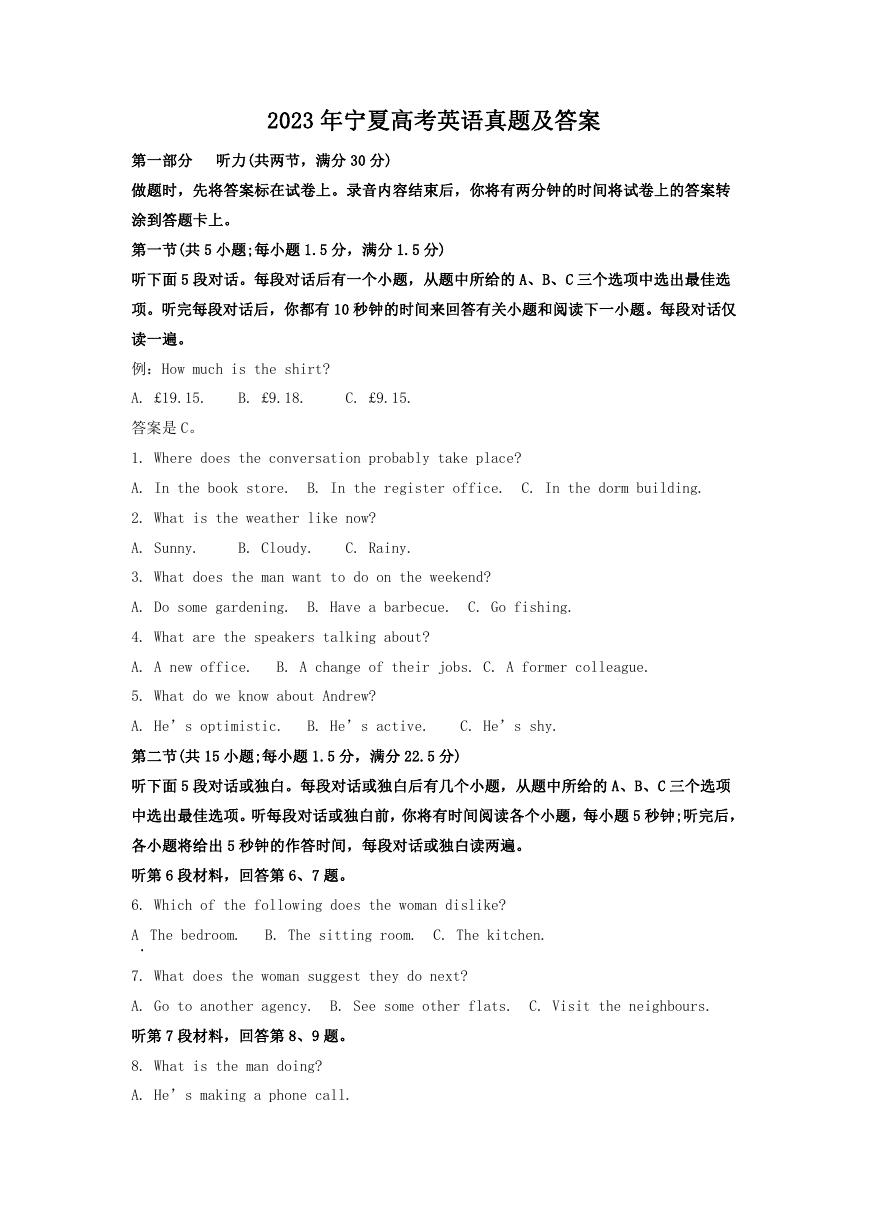
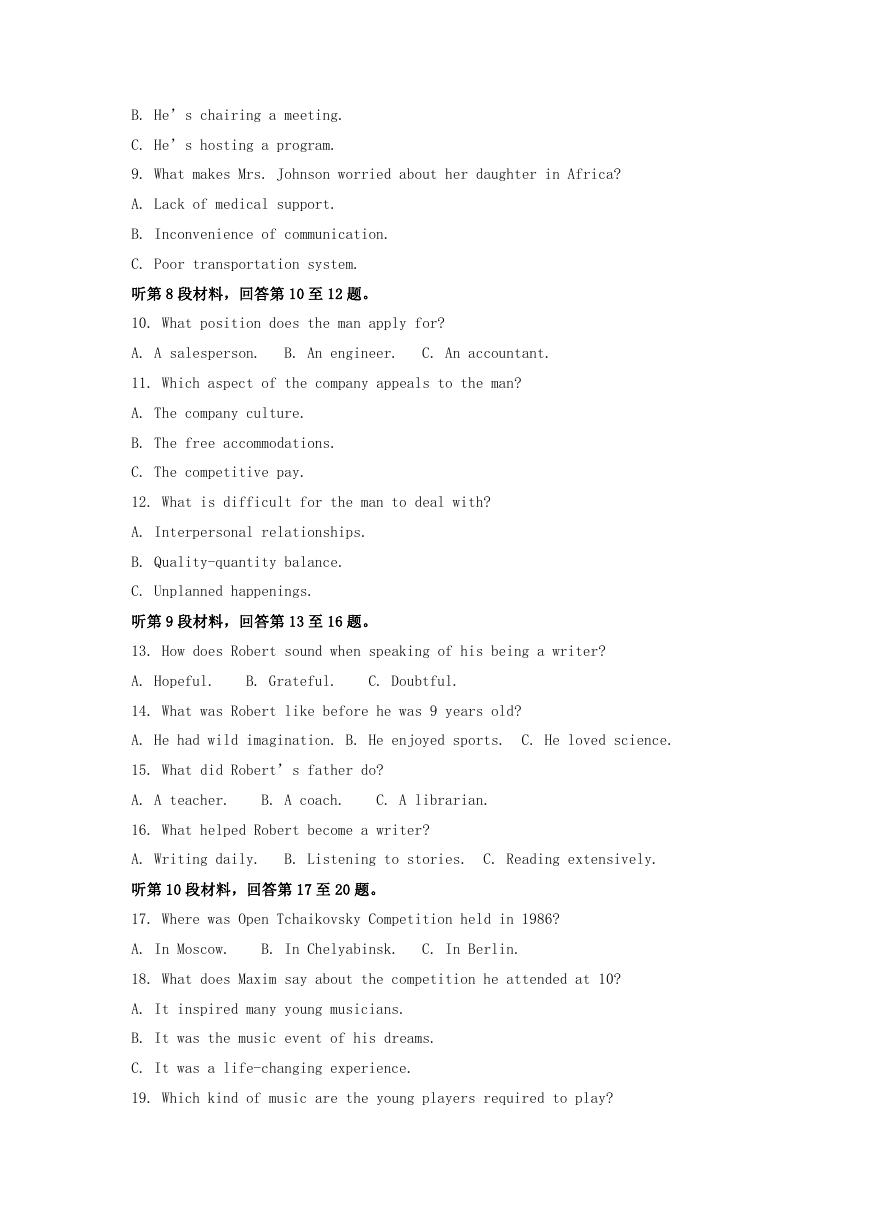
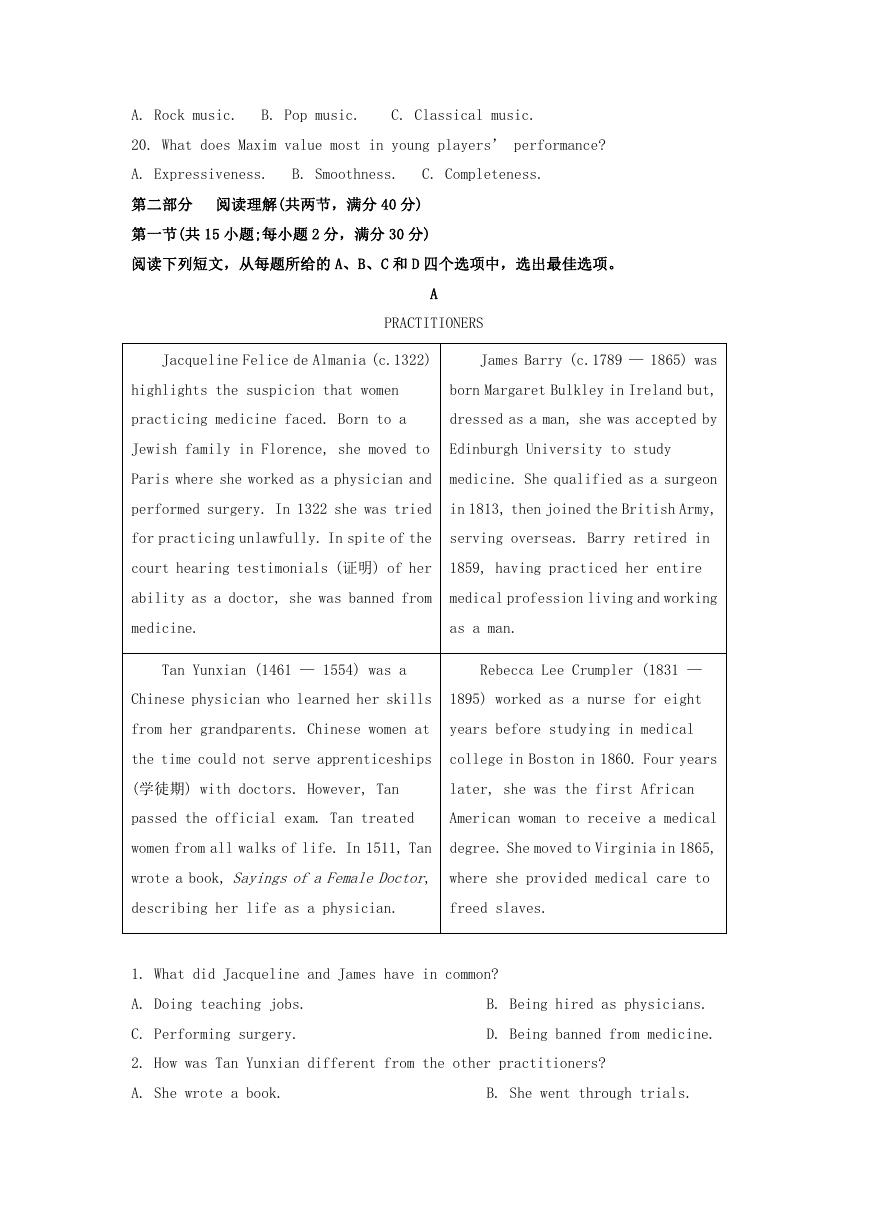
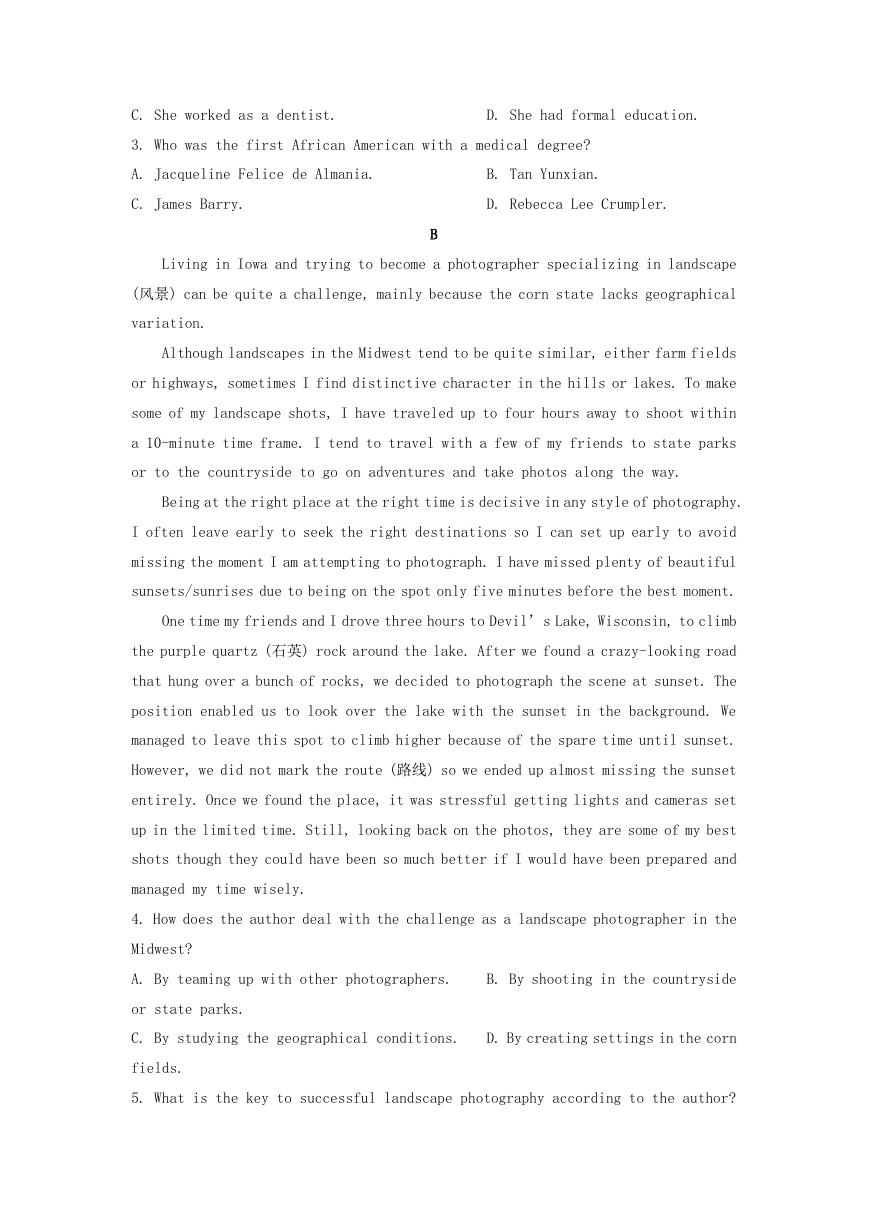
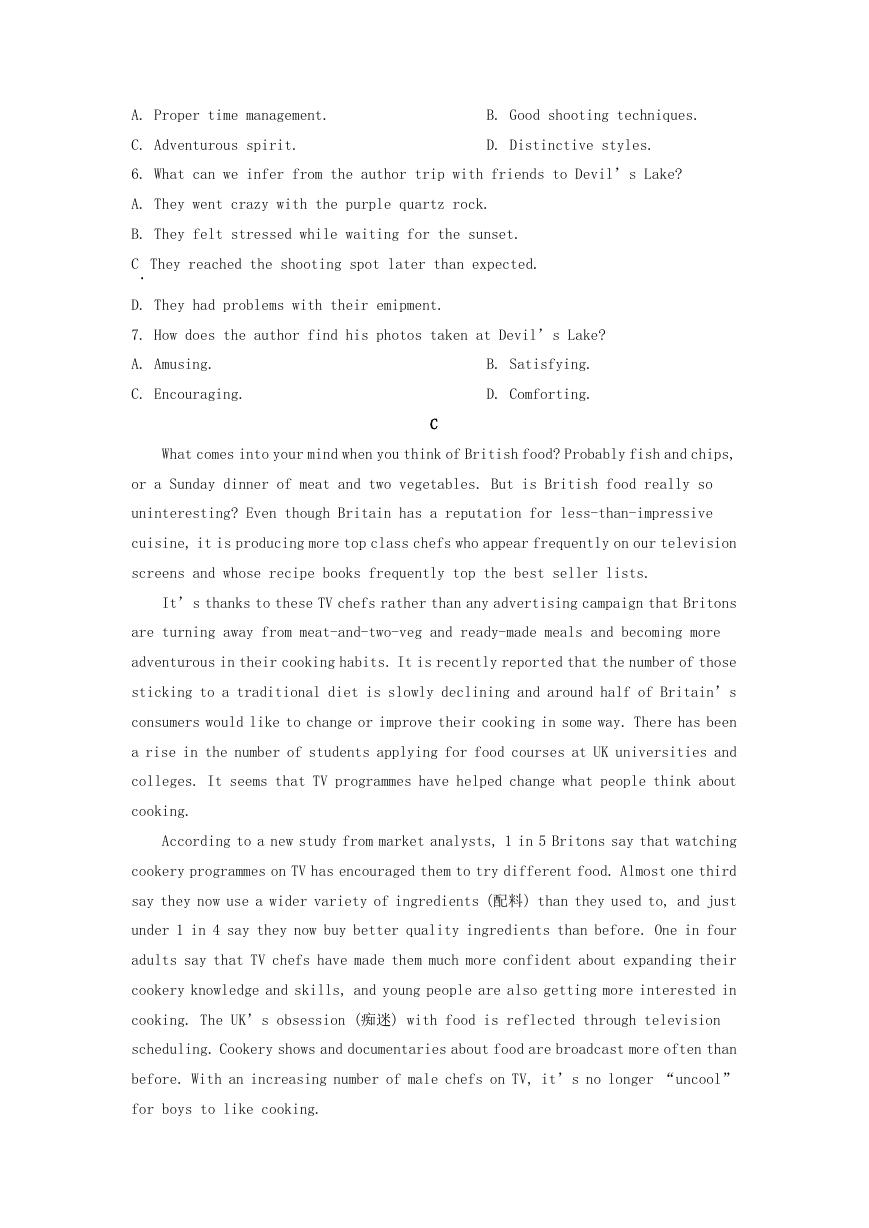
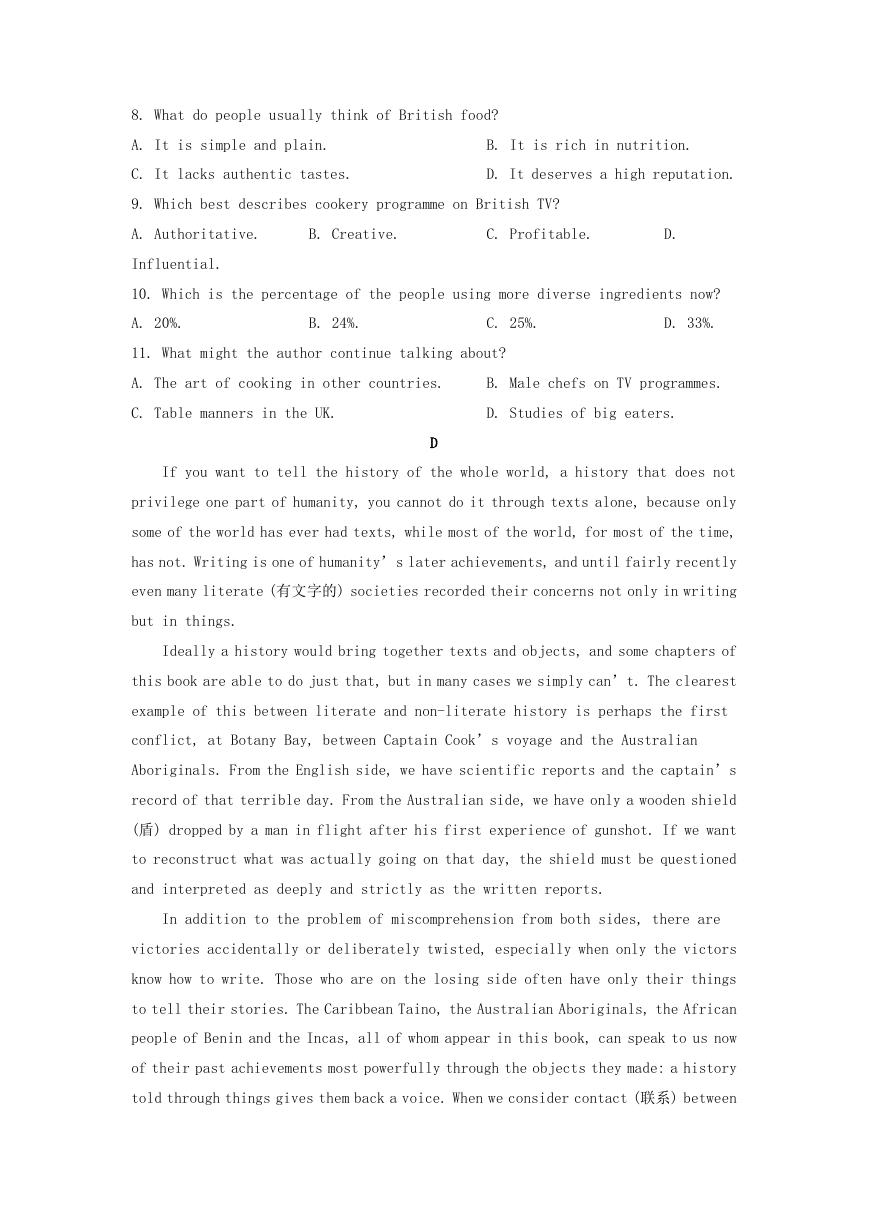
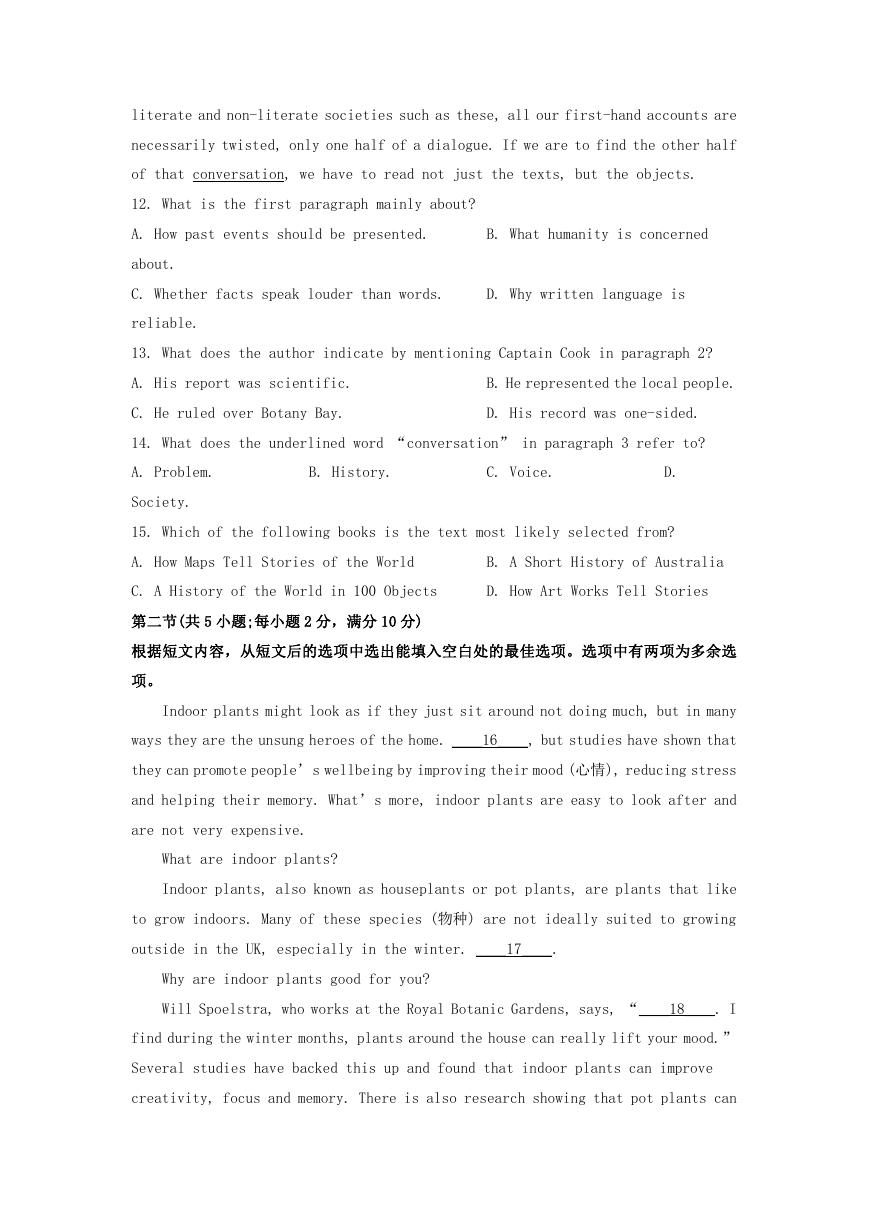
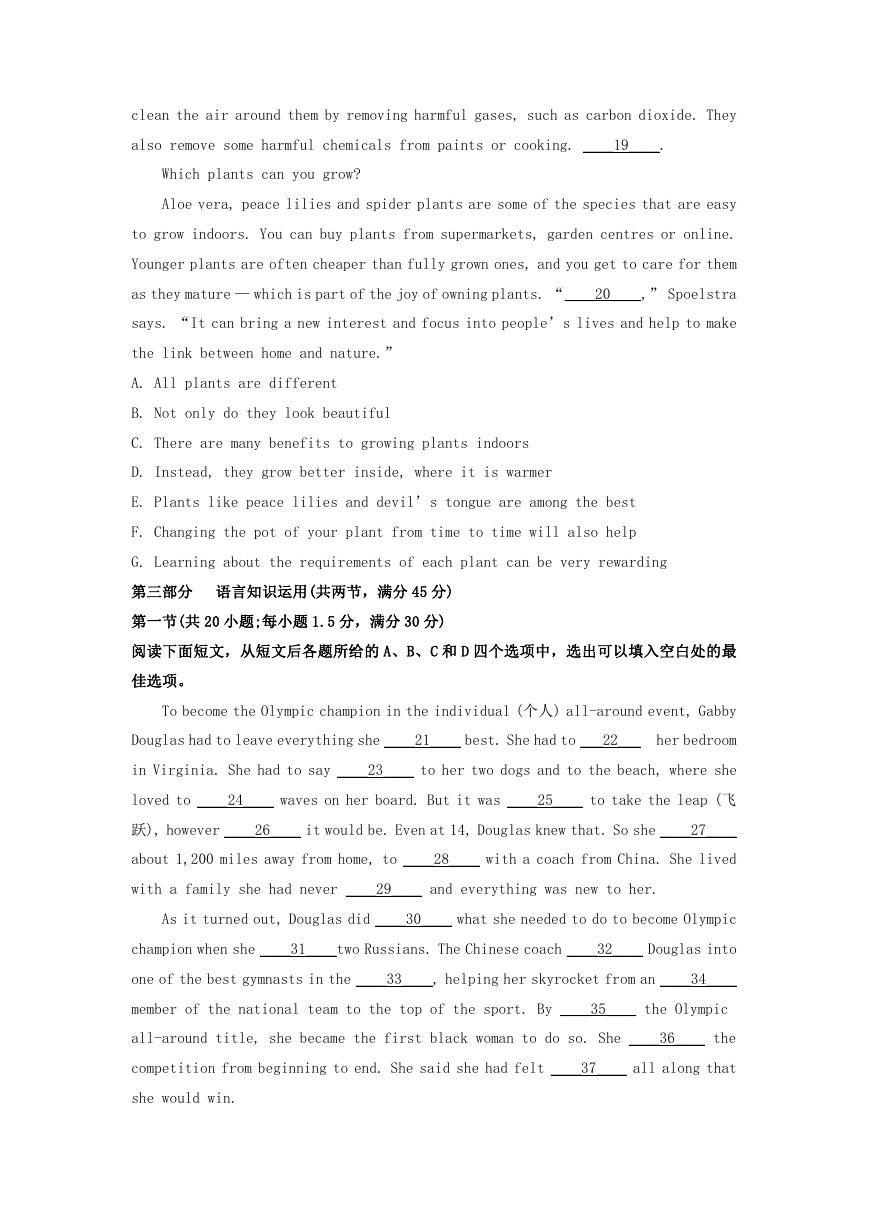








 2023年江西萍乡中考道德与法治真题及答案.doc
2023年江西萍乡中考道德与法治真题及答案.doc 2012年重庆南川中考生物真题及答案.doc
2012年重庆南川中考生物真题及答案.doc 2013年江西师范大学地理学综合及文艺理论基础考研真题.doc
2013年江西师范大学地理学综合及文艺理论基础考研真题.doc 2020年四川甘孜小升初语文真题及答案I卷.doc
2020年四川甘孜小升初语文真题及答案I卷.doc 2020年注册岩土工程师专业基础考试真题及答案.doc
2020年注册岩土工程师专业基础考试真题及答案.doc 2023-2024学年福建省厦门市九年级上学期数学月考试题及答案.doc
2023-2024学年福建省厦门市九年级上学期数学月考试题及答案.doc 2021-2022学年辽宁省沈阳市大东区九年级上学期语文期末试题及答案.doc
2021-2022学年辽宁省沈阳市大东区九年级上学期语文期末试题及答案.doc 2022-2023学年北京东城区初三第一学期物理期末试卷及答案.doc
2022-2023学年北京东城区初三第一学期物理期末试卷及答案.doc 2018上半年江西教师资格初中地理学科知识与教学能力真题及答案.doc
2018上半年江西教师资格初中地理学科知识与教学能力真题及答案.doc 2012年河北国家公务员申论考试真题及答案-省级.doc
2012年河北国家公务员申论考试真题及答案-省级.doc 2020-2021学年江苏省扬州市江都区邵樊片九年级上学期数学第一次质量检测试题及答案.doc
2020-2021学年江苏省扬州市江都区邵樊片九年级上学期数学第一次质量检测试题及答案.doc 2022下半年黑龙江教师资格证中学综合素质真题及答案.doc
2022下半年黑龙江教师资格证中学综合素质真题及答案.doc